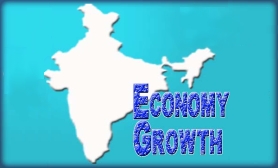|

|
'GDP growth to be 6 pc, underemployment huge problem'
|
|

|
|
| Top Stories |
 |
|
|
|
SME Times News Bureau | 23 Sep, 2015
The degree of underemployment in India is "huge", and unless the problem is solved at least half way, "achche din may not come" to India, feels Shankar Acharya, former economic advisor to the government. India, he adds, will likely see GDP growth at around 6 percent for the next five years and not the 8 percent being touted by the government.
In a talk on ‘India's Medium-Term Growth Prospects Over The Next 5 Years’, Acharya, who was chief economic advisor from April 1993 to December 2000, also said that with the disbanding of the "official Planning Commission" there is "no access to the official (economic) outlook or scenarios that plan documents used to provide".
Delivering the talk, held as part of the Changing Asia Series by think tank Society for Policy Studies (SPS) and India Habitat Centre on Tuesday evening, Acharya said that with the Narendra Modi government shifting to a new data base for measuring growth, one cannot easily answer the question ‘How fast is India growing’.
He said the growth rate of earlier years if measured according to the old Central Statistics Office (CSO) data and compared with the new data shows "big changes" in the growth numbers for those years. He showed the graphs for manufacturing and hotels industry, which indicated big upward changes according to the new data.
This, he said, was a "source of really major concern among serious economists and statisticians in India... I'm not saying it is wrong, but till it (data source) is sorted out and we get comparable data going backwards, we are in a bit of a puzzle."
Acharya cited a news report that 23 lakh (2.3 million) people, including Ph.D.s and post-graduates, had applied for 365 posts of peons in an Indian state, and said this pointed to a "pretty desperate" state of underemployment in the country.
"The degree of underemployment is huge, and until we solve this problem half way, achche din (good days) may not be here," he said.
Acharya, who is honorary orofessor at the Indian Council for Research on International Economic Relations (ICRIER), said when the NDA government came to power 16 months ago, there were "some promising initiatives". These included capping of the cooking gas subsidy, railway passenger fare increase, the Jan Dhan financial inclusion, the move to bring in the private sector into defence production, among other things.
But he said in the last few months there was "a distinct slowdown" in the wake of the setbacks in parliament which led to abandonment of the land acquisition bill and the Goods and Services Tax bill not being cleared in the Rajya Sabha.
He said the budget had promised disinvestment, but nothing has so far been done on that count, "maybe it has been abandoned".
Acharya said the move to privatize airports in many metros has been dropped, which "does not square up with the campaign slogan of minimum government, maximum governance".
Little has also been done to tackle the mess in the state electricity boards, and the reach of the direct benefit cash transfer has not been extended to food, fertilizer and kerosene, despite the reach of the Jan Dhan Yojana, the Aadhaar cards and mobile phones, the former economic advisor said.
He also said the "revival of fiscal populism" and the coming 7th Pay Commission, the "big election package for Bihar", the OROP and the inevitable demand from other sections of government employees would all add to the country's "financial stresses".
On GDP growth from 2015-2020, he said while the Economic Survey has predicted 8-plus growth, with his own analysis and the "data doubts" his speculation was that it would be in the "5 percent to 6.5 percent range".
He pointed out that unless India undertakes "very serious policy reform", there will be no possibility of the country witnessing 8-10 percent growth. "And frankly, I don’t see any serious policy reform on the cards, and that is why we will not see an average of 8 percent in 2015-20," he said.
|
|
|
| |
|
|
|
|
|
|
|
|
|
|
|
|
|
|
| |
| Customs Exchange Rates |
| Currency |
Import |
Export |
US Dollar
|
66.20
|
64.50 |
UK Pound
|
87.50
|
84.65 |
Euro
|
78.25
|
75.65 |
| Japanese
Yen |
58.85 |
56.85 |
| As on 13 Aug, 2022 |
|
|
| Daily Poll |
 |
 |
| PM Modi's recent US visit to redefine India-US bilateral relations |
|
|
|
|
|
| Commented Stories |
 |
|
|
|
|
|
| |
|